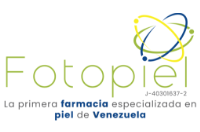DIABETES MELLITUS: MANIFESTACIONES CUTANEAS ESTUDIO CLINICO DESCRIPTIVO
Palabras clave:
DIABETES, MELLITUS, Diabetes Mellitus, Trastornos cutáneos,Resumen
Muchas de las manifestaciones cutáneas de la Diabetes Mellitus (DM) pueden ser un indicador temprano de complicaciones, por lo que un adecuado reconocimiento permitiría un tratamiento racional y a tiempo que evitaría manejos agresivos disminuiría las secuelas y por ende la morbilidad potencial para estos pacientes.
Motivados por ello y ante la escasez de investigaciones clínicas nacionales sobre el tema, realizamos este trabajo descriptivo sobre las diferentes manifestaciones cutáneas en Dm.
Se evaluaron 111 pacientes con Dm, de ellos 79 (71,18%) presentaron lesiones cutáneas. De este grupo, 73 (92,4%) eran diabéticos tipo II y 6 (7,6%) tipo I. Los trastornos cutáneos más frecuentes fueron las infecciones: micóticas (tiña pedis y unguis pies) y las piodermitis, seguidas por manifestaciones inespecificas y los trastornos vasculonerviosos, con gran prevalencia la dermopatia diabética (62,29%).
Se enfatiza la importancia del diagnóstico precoz, el conocimiento más realista de la enfermedad por parte de los pacientes y la necesidad de mejorar los cuidados higiénicos, los cuales en la población examinada no eran ideales.
ABSTRACT
Most of the cutaneous manifestations of Diabetes Mellitus can be an early indication of complications; therefore, their adequate recognition should allow rational treatment, which, used opportunely, could avoid aggressive measures, decreasing sequelae and, therefore, potential morbidity for these patients.
Due to the above, and in view of the scarcity of native clinical research on this subject, we decided to carry out this descriptive on the various cutaneous manifestations of DM.
We evaluated 111 patients with DM, 79 of them (71.18%) with cutaneous lesions. Of this group, 73'92.4%) were diabetics type II and 6 (7.6%) type I. The most frequent cutaneous disorders were infections: mycosis (tinea pedis and unguis pedis) and pyodermitis, followed by non-specific manifestations and the vascular-nervous disorders with great prevalence of diabetic dermopathies (62.29%).
We emphasize the great importance of an early diagnosis, a more realistic knowledge of the disease by the patients, and the need of improving hygienic measures, which in the population examined, were not ideal.
Descargas
Número
Sección
Licencia
Publicado por la Sociedad Venezolana de Dermatología Médica, Quirúrgica y Estética







